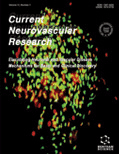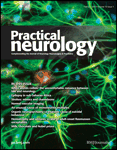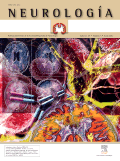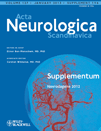
Translational Stroke Research
Scope & Guideline
Advancing stroke science for a healthier tomorrow.
Introduction
Aims and Scopes
- Mechanistic Studies of Stroke Pathophysiology:
The journal emphasizes research that elucidates underlying mechanisms of stroke, including ischemic and hemorrhagic types. This includes studies on cellular responses, molecular signaling pathways, and neuroinflammatory processes. - Innovative Therapeutic Strategies:
Research on novel therapeutic approaches, such as drug repurposing, stem cell therapy, and gene therapy, is a core focus. The journal seeks to highlight advancements in treatment protocols that aim to improve patient outcomes. - Preclinical and Clinical Trials:
Translational Stroke Research publishes both preclinical studies and clinical trial results, providing a comprehensive view of how findings in laboratory settings translate into clinical practice. - Neuroimaging and Biomarker Development:
The journal encourages studies that develop and validate neuroimaging techniques and biomarkers for better diagnosis and monitoring of stroke, contributing to personalized medicine. - Multidisciplinary Approaches:
The journal promotes a multidisciplinary approach to stroke research, integrating perspectives from neurology, vascular biology, immunology, and rehabilitation sciences.
Trending and Emerging
- Neuroinflammation and Immune Response:
There is an increasing emphasis on understanding the role of neuroinflammation and the immune response in stroke, including how these factors contribute to brain injury and recovery. - Personalized Medicine and Biomarkers:
Research aimed at identifying biomarkers for stroke risk assessment and recovery prediction is gaining momentum, reflecting a broader trend towards personalized treatment approaches. - Regenerative Medicine and Stem Cell Therapy:
The exploration of regenerative therapies, particularly stem cell applications for brain repair post-stroke, is a rapidly growing area of interest, reflecting advancements in tissue engineering and regenerative biology. - Advanced Neuroimaging Techniques:
Innovations in neuroimaging, such as the use of machine learning and advanced imaging modalities, are becoming increasingly prominent, facilitating better diagnosis and treatment planning. - Gut-Brain Axis Research:
Emerging studies exploring the relationship between the gut microbiome and stroke outcomes are gaining traction, indicating a novel area of research that connects systemic health to neurological outcomes.
Declining or Waning
- Traditional Pharmacological Interventions:
Research on conventional pharmacological treatments for stroke, such as aspirin and standard thrombolytic agents, has decreased as newer therapies and innovative approaches gain traction. - Basic Histopathological Studies:
While histopathological studies remain important, there is a noticeable decline in the publication of purely descriptive studies without translational implications, as the focus shifts towards more applied research. - Single-Factor Studies:
Research emphasizing single factors in stroke pathology is waning, with a growing preference for studies that examine complex interactions and multifactorial approaches to stroke mechanisms. - Longitudinal Studies with Limited Scope:
Longitudinal studies that do not integrate broader biological or clinical contexts are less frequently published, as the field increasingly values comprehensive, multifaceted analyses.
Similar Journals

Stroke Research and Treatment
Empowering clinicians with cutting-edge stroke research.Stroke Research and Treatment is a premier Open Access journal published by HINDAWI LTD, dedicated to advancing the understanding and management of stroke and related neurological disorders. Since its inception in 2010, this journal has established itself as a valuable resource for researchers and clinicians in the field of neurology, providing a platform for high-quality, peer-reviewed articles that aim to improve patient outcomes and stimulate clinical practice innovations. With a 2023 Scopus ranking placing it in the Q3 category and a percentile ranking of 44th in clinical neurology, the journal is positioned to influence the ongoing discourse in stroke research. Stroke Research and Treatment embraces a global audience, with its editorial operations based in London, England. The journal's commitment to open access ensures that its content is freely available to all, promoting extensive dissemination and engagement in this critical field of study. Researchers, professionals, and students are encouraged to contribute their findings to this dynamic journal, fostering collaboration and knowledge sharing in the ongoing fight against stroke.

Clinical Neuroradiology
Exploring the Nexus of Neurology and Radiology.Clinical Neuroradiology, published by SPRINGER HEIDELBERG, is a leading journal in the fields of neurology and radiology, focusing on the intersection of clinical practice and cutting-edge imaging technologies. With an impressive impact factor and categorized within Q2 in Neurology (clinical) and Q1 in Radiology, Nuclear Medicine and Imaging, this journal is positioned at the forefront of scientific discourse, facilitating high-quality research dissemination from its origins in 2000 through to 2024. Situated in Germany, Clinical Neuroradiology provides a platform for researchers, professionals, and students to explore the latest advancements and insights in neuroimaging, ensuring that its readership remains at the vanguard of clinical practice. While it does not offer open access, the journal remains committed to fostering a vibrant academic community dedicated to enhancing patient care through innovative neuroradiological techniques and findings.

CURRENT NEUROVASCULAR RESEARCH
Fostering Academic Discourse in Neurovascular StudiesCURRENT NEUROVASCULAR RESEARCH is an esteemed peer-reviewed journal published by Bentham Science Publishers Ltd, focusing on the intricate relationships within the realms of cellular and molecular neuroscience, developmental neuroscience, and neurology. With an ISSN of 1567-2026 and an E-ISSN of 1875-5739, this journal has been contributing to the field since its inception in 2004 and is poised to continue through 2024. As a resource dedicated to disseminating innovative research findings, CURRENT NEUROVASCULAR RESEARCH is recognized within Category Quartiles as Q3 in multiple fields, including Neurology (clinical) and Developmental Neuroscience. Although classified in the Q4 category for Cellular and Molecular Neuroscience, the journal maintains a crucial role in fostering academic discourse and advancing our understanding of neurovascular dynamics. Researchers, professionals, and students will find valuable insights in this journal, offering access to a diverse range of studies that highlight cutting-edge developments in the field.

JAMA Neurology
Advancing Neurological Insights for Tomorrow's TreatmentsJAMA Neurology is a leading peer-reviewed journal published by the American Medical Association, focused on advancing the understanding and treatment of neurological disorders. With an impressive impact factor and ranked in the 99th percentile among clinical neurology journals, this publication is recognized as Q1 in its category for 2023, highlighting its significance in the field. Since its inception, the journal has provided a platform for high-quality research, clinical trials, and reviews that inform both clinicians and researchers. Operating from its headquarters in Chicago, Illinois, JAMA Neurology offers rich insights into the latest advancements in neurology, featuring articles that span a wide range of topics including neurodegenerative diseases, stroke, epilepsy, and neurocritical care. Researchers and professionals are encouraged to access the journal’s content freely, as it employs open access options to promote the dissemination of critical knowledge. As a critical resource in the field of neurology, JAMA Neurology is essential for anyone involved in this dynamic and rapidly evolving specialty.

European Stroke Journal
Transforming knowledge into stroke prevention strategies.The European Stroke Journal, published by SAGE Publications Ltd, is a pivotal resource in the domains of Cardiology and Neurology, reflecting its commitment to advancing knowledge and research in these critical areas of medicine. Since its inception in 2016, this journal has rapidly gained recognition, achieving a prestigious Q1 ranking in both Cardiology and Neurology (clinical) as of 2023, placing it among the top quartile publications in these fields. With a prominent position, ranked 65th and 72nd respectively in Scopus for Cardiology and Neurology, the journal caters to a diverse audience of researchers, clinicians, and students dedicated to improving stroke treatment and prevention strategies. Although it operates under a traditional access model, its impactful publications are essential for anyone involved in stroke research, ensuring they remain at the forefront of scientific developments and clinical practices.

PRACTICAL NEUROLOGY
Elevating Standards in Neurological Care and ResearchPRACTICAL NEUROLOGY, published by the esteemed BMJ PUBLISHING GROUP, is a prominent journal in the fields of neurology and medicine, significantly impacting clinical practice since its inception in 2001. With an ISSN of 1474-7758 and an e-ISSN of 1474-7766, this UK-based journal reaches a diverse audience of researchers, clinicians, and students who seek to advance their understanding of neurological conditions and patient care strategies. Ranked in the second quartile (Q2) in both the miscellaneous medicine and clinical neurology categories for 2023, and positioned in the 47th percentile among its peers, PRACTICAL NEUROLOGY provides a platform for high-quality research that bridges the gap between laboratory findings and clinical applications. The journal's commitment to disseminating valuable information through peer-reviewed articles ensures that readers are equipped with the latest insights and practical knowledge necessary for improving outcomes in neurology. While access options are not currently open, the journal remains a vital resource for professionals striving to stay at the forefront of neurological research and clinical practice.

NEUROLOGIA
Unlocking Insights in Neurology, Open to AllNEUROLOGIA, an esteemed journal published by ELSEVIER ESPANA SLU, stands at the forefront of the field of neurology, with a dedicated focus on innovative research and clinical practice since its inception in 1973. As an Open Access journal since 2017, it champions the dissemination of knowledge, allowing researchers, professionals, and students alike to access cutting-edge findings in neurology without barriers. With an impressive Scopus rank of #115 in the clinical neurology category, placing it in the 71st percentile, NEUROLOGIA is categorized as Q3 in both general medicine and clinical neurology, reflecting its impact and relevance in a rapidly evolving field. Based in Barcelona, Spain, the journal's commitment to advancing understanding of neurological conditions is underscored by its rigorous peer-review process and engagement with a global audience. As it continues to publish vital research that shapes clinical practices and informs policy, NEUROLOGIA remains an integral resource for those striving to improve outcomes in neurology.

Cognitive and Behavioral Neurology
Pioneering Research for Enhanced Patient OutcomesCognitive and Behavioral Neurology is a prominent peer-reviewed journal dedicated to advancing the understanding of cognitive and behavioral aspects of neurological disorders. Published by Lippincott Williams & Wilkins, this journal has established itself as a vital resource for researchers, clinicians, and students in the fields of cognitive neuroscience, neuropsychology, and psychiatry. With an ISSN of 1543-3633 and an E-ISSN of 1543-3641, it offers a robust platform for the dissemination of high-quality research, as evidenced by its positioning in the Q3 quartiles across various categories, including Cognitive Neuroscience and Psychiatry. The journal, which has been actively publishing since 2003, encourages innovative studies that explore the intersection of cognition and behavior in neurological contexts. As a vital contributor to the academic dialogue on these topics, it provides an essential archive of findings and discussions that inform clinical practice and educational approaches, reflecting its commitment to improving patient outcomes and enhancing neurological science.

ACTA NEUROLOGICA SCANDINAVICA
Connecting Research and Practice in NeuroscienceACTA NEUROLOGICA SCANDINAVICA is a prestigious journal published by Wiley that has significantly contributed to the field of neurology and neuroscience since its inception in 1961. With a broad scope encompassing clinical and experimental research, this journal is esteemed for its rigorous peer-review process and high-quality publications. Located in the United Kingdom, it is recognized in the 2023 category quartiles as Q1 in Medicine (miscellaneous) and Q2 in both Neurology and Clinical Neurology, indicating its strong influence and relevance within the medical community. With an H-index demonstrating consistent citation impact, ACTA NEUROLOGICA SCANDINAVICA holds a Scopus rank of #86 out of 400 in Clinical Neurology, reflecting its contribution to advancing current knowledge and practice. Researchers, professionals, and students alike will find in this journal a valuable resource for the latest findings, discussions, and developments in understanding neurological disorders and treatments, furthering educational and clinical endeavors alike.

Topics in Stroke Rehabilitation
Leading the way in rehabilitation research.Topics in Stroke Rehabilitation, published by Taylor & Francis Ltd, stands as a premier academic journal offering cutting-edge research and insights in the fields of rehabilitation, neurology, and community care. With an impressive impact factor reflecting its strong scholarly influence, this journal not only maintains a distinguished Q1 ranking in Community and Home Care and Rehabilitation but is also recognized in the Q2 category for Clinical Neurology, showcasing its relevance across multiple disciplines. Covering a comprehensive range of topics from neurorehabilitation techniques to patient-centered care strategies, Topics in Stroke Rehabilitation serves as an essential resource for researchers, healthcare professionals, and students dedicated to enhancing the quality of life for individuals recovering from stroke. With an accessible archive dating back to 1996 and continuous publication through 2024, this journal invites collaboration and discourse, fostering advancements in both theoretical knowledge and practical applications within the realm of stroke rehabilitation.